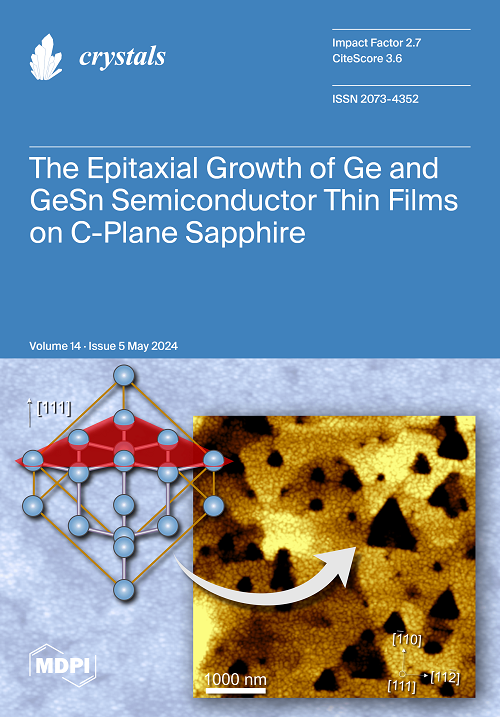The Effect of Hatch Spacing on the Electrochemistry and Discharge Performance of a CeO2/Al6061 Anode for an Al-Air Battery via Selective Laser Melting
IF 2.4
4区 材料科学
Q2 CRYSTALLOGRAPHY
引用次数: 0
Abstract
To improve the electrochemical activity and discharge performance of an aluminum-air (Al-air) battery, a commercial 6061 alloy (Al6061) was selected as the anode, and CeO2 was also added inside the anode to enhance its performance. The CeO2/Al6061 composite was prepared using selective laser melting (SLM) technology. The influence of hatch spacing on the forming quality, corrosion resistance, and discharge performance of the anode was studied in detail. The results showed that with an increase in hatch spacing, the density, corrosion resistance, and discharge performance of the anode first increased and then decreased. When the hatch spacing is 0.13 mm, the anode has the best forming quality. At this point, the density reaches 98.39%, and the self-corrosion rate (SCR) decreases to 2.596 × 10−4 g·cm−2·min−1. Meanwhile, the anode exhibits its highest electrochemical activity and discharge voltage, which is up to −1.570 V. The change in anode performance is related to the defects generated during the SLM forming process. For samples with fewer defects, the anode can dissolve uniformly, while for samples with more defects, the electrode solution is prone to penetrate the defects, causing uneven corrosion and reducing electrochemical and discharge activity.舱口间距对通过选择性激光熔化实现的铝-空气电池 CeO2/Al6061 阳极的电化学和放电性能的影响
为了提高铝-空气(Al-air)电池的电化学活性和放电性能,我们选择了商用 6061 合金(Al6061)作为阳极,并在阳极内添加 CeO2 以提高其性能。CeO2/Al6061 复合材料是采用选择性激光熔融(SLM)技术制备的。详细研究了舱口间距对阳极的成型质量、耐腐蚀性和放电性能的影响。结果表明,随着间距的增大,阳极的密度、耐腐蚀性和放电性能先增大后减小。当舱口间距为 0.13 毫米时,阳极的成型质量最好。此时,密度达到 98.39%,自腐蚀速率(SCR)降至 2.596 × 10-4 g-cm-2-min-1。同时,阳极显示出最高的电化学活性和放电电压,最高达 -1.570 V。阳极性能的变化与 SLM 成型过程中产生的缺陷有关。对于缺陷较少的样品,阳极可以均匀溶解,而对于缺陷较多的样品,电极溶液容易渗透到缺陷中,导致腐蚀不均匀,降低电化学活性和放电活性。
本文章由计算机程序翻译,如有差异,请以英文原文为准。
求助全文
约1分钟内获得全文
求助全文
来源期刊

Crystals
CRYSTALLOGRAPHYMATERIALS SCIENCE, MULTIDIS-MATERIALS SCIENCE, MULTIDISCIPLINARY
CiteScore
4.20
自引率
11.10%
发文量
1527
审稿时长
16.12 days
期刊介绍:
Crystals (ISSN 2073-4352) is an open access journal that covers all aspects of crystalline material research. Crystals can act as a reference, and as a publication resource, to the community. It publishes reviews, regular research articles, and short communications. Our aim is to encourage scientists to publish their experimental and theoretical results in as much detail as possible. Therefore, there is no restriction on article length. Full experimental details must be provided to enable the results to be reproduced. Crystals provides a forum for the advancement of our understanding of the nucleation, growth, processing, and characterization of crystalline materials. Their mechanical, chemical, electronic, magnetic, and optical properties, and their diverse applications, are all considered to be of importance.
 求助内容:
求助内容: 应助结果提醒方式:
应助结果提醒方式:


